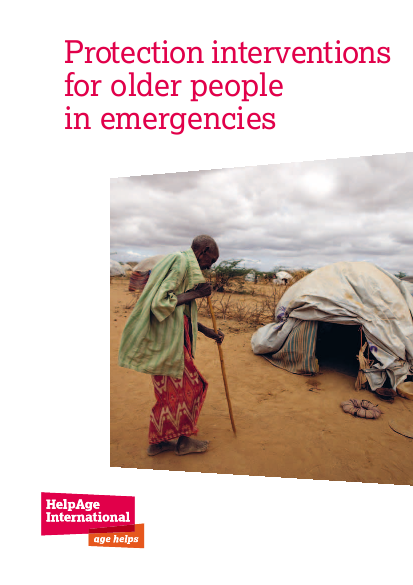
Older people constitute a significant and growing number of those affected by humanitarian crises. Currently, 11.8 per cent of the world’s population is aged 60 or over, and 21.7 per cent is aged 50 or over. By 2050, there will be more people over 60 than children under 15. Global trends show that this is not only a developed world phenomenon: by 2050, nearly 80 per cent of the world’s older people will live in emerging and developing economies, where disasters are more likely to occur and their effects are felt more acutely.
The lack of programming and funding for older people in emergencies belies the fact that they do indeed face specific protection issues and risks in emergency contexts. In some cases, for reasons related to age and gender, these issues require tailored protection programming in response. The protection issues that older people face may arise from human rights violations perpetrated by states, state or non-state armed groups, or other international or national actors. They may also arise from problems at individual, family or community level that are exacerbated by a crisis. Therefore, when implementing a humanitarian protection response it is essential to undertake a comprehensive situation assessment, to consider the contextual issues relevant to the environment, and to ensure older people’s participation in assessments and the decision-making process. This approach will allow you to identify the risks faced by older people and the degree to which they can be addressed by mainstreaming older people in protection programming, and when they require a specific tailored approach.